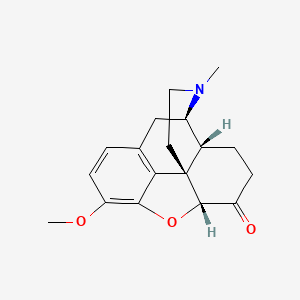Can You Take Hydrocone While Breast Feeding
NCBI Bookshelf. A service of the National Library of Medicine, National Institutes of Health.
Drugs and Lactation Database (LactMed) [Internet]. Bethesda (MD): National Library of Medicine (US); 2006-.

Drugs and Lactation Database (LactMed) [Internet].
Show details
- Contents
CASRN: 125-29-1; 1259440-61-3

Drug Levels and Effects
Summary of Use during Lactation
Hydrocodone is an opioid narcotic. Benzhydrocodone is a hydrocodone prodrug that is rapidly converted into hydrocodone in the gastrointestinal tract. Maternal use of oral narcotics during breastfeeding can cause infant drowsiness, and severe central nervous system depression. Newborn infants seem to be particularly sensitive to the effects of even small dosages of narcotic analgesics. Once the mother's milk comes in, it is best to provide pain control with a nonnarcotic analgesic and limit maternal intake of oral hydrocodone to 2 to 3 days at a maximum dosage of 30 mg daily with close infant monitoring. If the baby shows signs of increased sleepiness (more than usual), difficulty breastfeeding, breathing difficulties, or limpness, a physician should be contacted immediately.
Drug Levels
Hydrocodone is metabolized to 6 active metabolites, including hydromorphone.
Maternal Levels. Two hospitalized mothers were taking hydrocodone and acetaminophen combination for pain and pumped their milk for their nonhospitalized infants. They donated samples of their pumped milk for analysis of hydrocodone. One mother had 17 milk hydrocodone levels measured over 4 days while taking first 10 mg and then 5 mg of hydrocodone bitartrate as needed, beginning on day 7 postpartum. Her milk hydrocodone levels ranged from 8.6 to 127.3 mcg/L. The second mother had 5 milk hydrocodone levels measured over 1.5 days while taking 5 mg doses of hydrocodone bitartrate. Her milk hydrocodone levels ranged from 5.2 to 47.2 mcg/L, beginning at day 16 postpartum. Their infants received an estimated 3.1 and 3.7% of the maternal weight-adjusted dosages, but the absolute hydrocodone dosages were 8.58 mcg/kg and 3.07 mcg/kg daily because of the differences in the dosages ingested by their mothers.[1]
A study of 30 postpartum women taking a hydrocodone-containing product for postpartum pain measured hydrocodone and hydromorphone in breastmilk. Milk samples were collected after lactogenesis II was judged to have occurred, usually starting on the third postpartum day. Mean and median maternal dosages of hydrocodone base were 175 and 145 mcg/kg daily, respectively (range 44.3 to 423.2 mcg/kg daily). The mean and median milk hydrocodone concentrations were 25.9 and 14.2 mcg/L, respectively. Only 12 of the 30 women had hydromorphone detectable (>1 mcg/L) in their milk with a median milk hydromorphone concentration of 1.9 mcg/L. Mean and median infant daily dosages of hydrocodone were 3.9 and 2.1 mcg/kg, respectively, which were equal to 2.4 and 1.6% of the weight-adjusted maternal dosage, respectively. Mean and median infant dosage of hydromorphone were 2.1 and 0.3 mcg/kg daily, respectively. Two women excreted much more hydromorphone into their milk than the others and might represent ultrarapid CYP2D6 metabolizers. Taking the two narcotics' potencies into account, a fully breastfed neonate would receive a mean and median of 1.5 and 0.7% of the minimum infant therapeutic opiate dosage; however, neonates might be more susceptible to the opiates than the older infants on whom these dosages were based. The authors concluded that maternal dosages of hydrocodone bitartrate up to 30 to 35 mg daily are unlikely to adversely affect breastfed neonates, but that prolonged use of dosages over 40 mg daily should be avoided during breastfeeding.[2]
Infant Levels. Relevant published information was not found as of the revision date.
Effects in Breastfed Infants
The 18-day-old infant of a breastfeeding mother became groggy and "slept for most of the day" while the mother was taking 20 mg of oral hydrocodone combined with 1300 mg of acetaminophen every 4 hours for painful nipple candidiasis and mastitis. The mother decreased her dose by one-half and the infant apparently no longer experienced grogginess or hypersomnolence.[3] The infant's symptoms were probably due to the maternal hydrocodone.
A 5-week-old breastfed infant became cyanotic and required mouth-to-mouth resuscitation and intubation. The infant's urine was positive for opioids and the infant responded positively to naloxone; the level of consciousness improved over 2 days and extubation was accomplished. The infant's mother admitted to taking a hydrocodone-acetaminophen combination product and methadone that had been prescribed for migraine headache before she was breastfeeding.[4] The infant's symptoms were probably due to the maternal opiate use.
Effects on Lactation and Breastmilk
Narcotics can increase serum prolactin.[5] However, the prolactin level in a mother with established lactation may not affect her ability to breastfeed.
References
- 1.
-
Anderson PO, Sauberan JB, Lane JR, et al. Hydrocodone excretion into breastmilk: The first two reported cases. Breastfeed Med. 2007;2:10–4. [PubMed: 17661614]
- 2.
-
Sauberan JB, Anderson PO, Lane JR, et al. Breast milk hydrocodone and hydromorphone levels in mothers using hydrocodone for postpartum pain. Obstet Gynecol. 2011;117:611–7. [PubMed: 21343764]
- 3.
-
Bodley V, Powers D. Long-term treatment of a breastfeeding mother with fluconazole-resolved nipple pain caused by yeast: A case study. J Hum Lact. 1997;13:307–11. [PubMed: 9429366]
- 4.
-
Meyer D, Tobias JD. Adverse effects following the inadvertent administration of opioids to infants and children. Clin Pediatr (Phila). 2005;44:499–503. [PubMed: 16015396]
- 5.
-
Tolis G, Dent R, Guyda H. Opiates, prolactin, and the dopamine receptor. J Clin Endocrinol Metab. 1978;47:200–3. [PubMed: 263291]
Substance Identification
Substance Name
Hydrocodone; Benzhydrocodone
CAS Registry Number
125-29-1
Drug Class
Breast Feeding
Lactation
Milk, Human
Analgesics, Opioid
Narcotics
Antitussive Agents
-
Disclaimer: Information presented in this database is not meant as a substitute for professional judgment. You should consult your healthcare provider for breastfeeding advice related to your particular situation. The U.S. government does not warrant or assume any liability or responsibility for the accuracy or completeness of the information on this Site.
Source: https://www.ncbi.nlm.nih.gov/books/NBK501225/
0 Response to "Can You Take Hydrocone While Breast Feeding"
Post a Comment